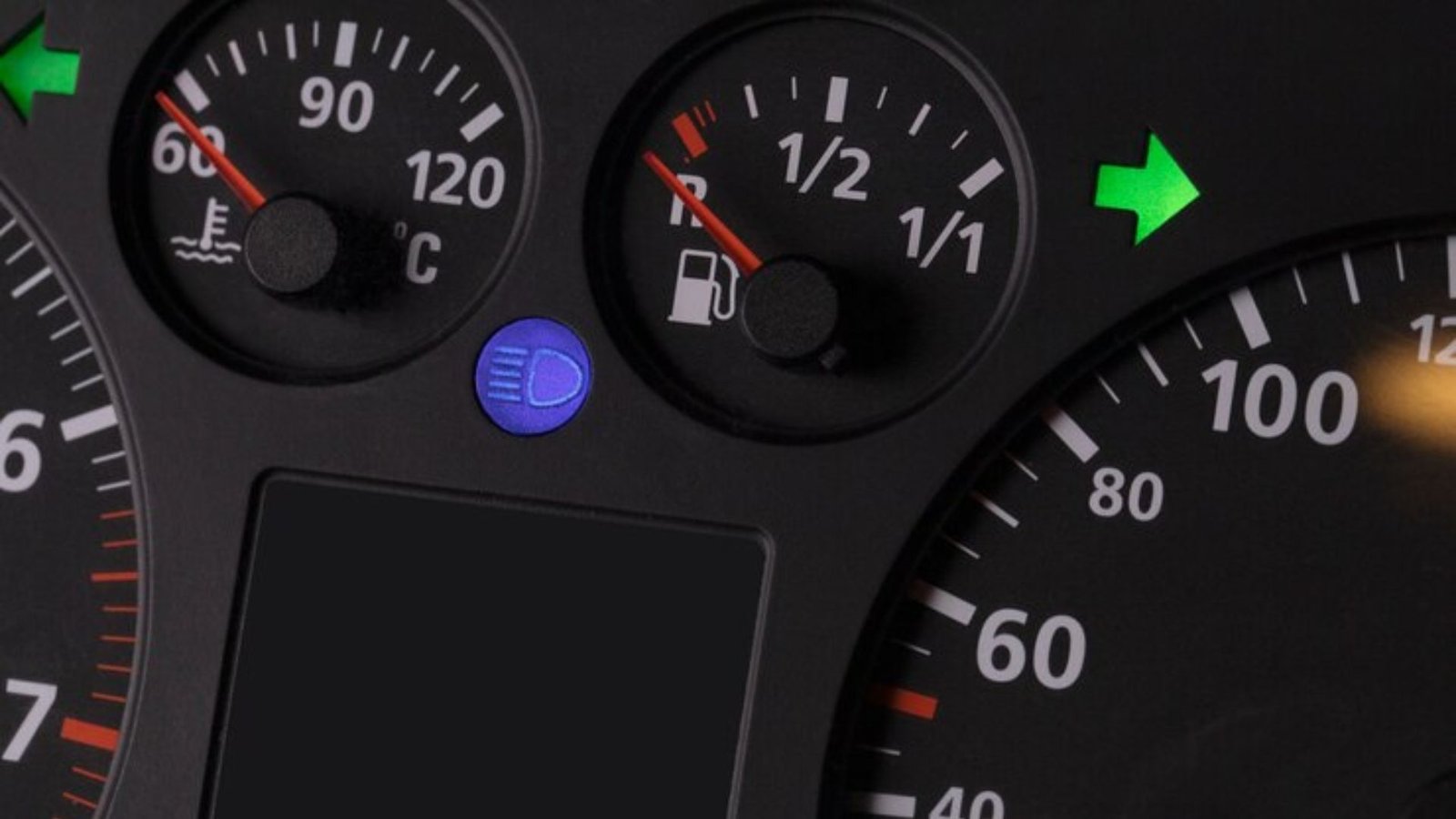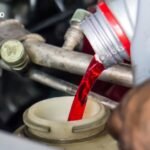Low oil pressure at idle is a common issue that many car owners may encounter. The oil pressure in an engine plays a critical role in lubricating moving parts, reducing friction, and preventing wear and tear. When the oil pressure drops, especially when the engine is idling, it can signal a serious problem that could lead to engine damage if not addressed promptly.
In this article, we will explore the causes of low oil pressure at idle, the symptoms to look out for, potential risks, and the solutions to fix the issue. By understanding this problem in detail, you can take appropriate steps to prevent further damage to your vehicle and ensure its optimal performance.
Understanding Oil Pressure in Engines
Oil pressure is generated by the oil pump in an engine. The oil pump circulates oil throughout the engine, ensuring that all moving parts are properly lubricated. This circulation helps to maintain an optimal temperature and reduces wear and tear on components like pistons, camshafts, and crankshafts.
The oil pressure is measured in PSI (pounds per square inch), and a typical healthy oil pressure reading for most engines should fall between 25 and 65 PSI when the engine is idling. However, it can vary depending on the make and model of your vehicle. When the oil pressure falls below the recommended level, especially at idle, it can be a sign of an underlying issue.
Causes of Low Oil Pressure at Idle
There are several potential causes for low oil pressure at idle, and understanding these causes can help you identify the right solution. Here are some of the most common reasons why this issue may occur:
Low Oil Levels
One of the simplest reasons for low oil pressure at idle is insufficient oil levels in the engine. Oil naturally depletes over time due to evaporation, leaks, and combustion. If the oil level is too low, the oil pump may struggle to circulate oil properly, leading to a drop in oil pressure, especially at idle.
Oil Viscosity Issues
Oil viscosity refers to the thickness or flow rate of the oil. If the oil in your engine is too thin (low viscosity), it may not provide enough lubrication, leading to lower oil pressure. On the other hand, if the oil is too thick (high viscosity), it can also cause problems, particularly in colder weather when the oil has a higher resistance to flow.
Worn Oil Pump
The oil pump is responsible for maintaining proper oil pressure by circulating the oil throughout the engine. Over time, the oil pump can wear out due to prolonged use or contamination from dirty oil. A malfunctioning or worn oil pump can result in a drop in oil pressure, especially when the engine is idling.
Clogged Oil Filter
A clogged oil filter can prevent proper oil flow through the engine, leading to a reduction in oil pressure. Over time, oil filters accumulate dirt, debris, and contaminants, causing them to become clogged. When this happens, the oil cannot flow efficiently, resulting in low oil pressure at idle.
Worn Engine Bearings
Engine bearings play a critical role in supporting the crankshaft and other moving parts. If these bearings become worn out, they can create gaps that allow oil to escape, reducing the oil pressure. This issue is more likely to occur in older engines with high mileage.
Leaking Oil Seals or Gaskets
Oil seals and gaskets are responsible for preventing oil from leaking out of the engine. If these seals or gaskets become damaged or worn out, oil can leak, causing a drop in oil levels and, consequently, oil pressure. This can become particularly noticeable at idle when the engine is under less load.
Faulty Oil Pressure Sensor
Sometimes, the issue may not be with the oil pressure itself, but with the oil pressure sensor. A faulty or malfunctioning sensor may give a false reading, indicating low oil pressure even when the oil pressure is normal. This is more likely if the oil pressure warning light comes on unexpectedly.
Contaminated or Old Oil
Over time, engine oil can become contaminated with dirt, debris, and other contaminants. Old oil can also lose its effectiveness in lubricating engine parts. This can cause a reduction in oil pressure, particularly when the engine is idling, as the oil becomes thicker and less efficient at circulating.
Oil Pressure Relief Valve Issues
The oil pressure relief valve is designed to regulate oil pressure by redirecting excess oil back into the oil pan. If this valve becomes stuck or fails, it can cause irregular oil pressure, leading to low oil pressure at idle. This is a less common but possible cause of the issue.
Symptoms of Low Oil Pressure at Idle
Low oil pressure at idle often comes with several noticeable symptoms that can help you identify the problem early. Some of these symptoms include:
Oil Pressure Warning Light: This is the most obvious indicator that something is wrong with your oil pressure. If the oil pressure warning light comes on while your vehicle is idling, it’s a clear sign that the oil pressure is too low.
Engine Noise: Low oil pressure can result in insufficient lubrication, leading to increased friction and unusual engine noises, such as knocking or ticking sounds.
Erratic or Low RPM: If the engine is idling at an unusually low RPM (revolutions per minute), it could be due to low oil pressure, which affects the engine’s performance.
Poor Acceleration: A drop in oil pressure can lead to sluggish acceleration and poor engine response, especially when the vehicle is in idle.
Visible Oil Leaks: If there’s a noticeable oil leak under the vehicle, it could be a sign that oil pressure is low due to oil loss.
Risks of Ignoring Low Oil Pressure at Idle
Ignoring low oil pressure at idle can have serious consequences for your engine’s health. Some of the risks include:
Increased Engine Wear
When oil pressure is low, engine parts experience increased friction. This leads to greater wear and tear on vital components like pistons, bearings, and the crankshaft, potentially causing permanent damage to your engine.
Overheating
Low oil pressure can also result in inadequate cooling of the engine. Without sufficient oil circulation, the engine can overheat, leading to further damage. Overheating can warp components, damage seals, and even cause the engine to seize.
Complete Engine Failure
In the worst-case scenario, prolonged low oil pressure can cause total engine failure. Without proper lubrication, the engine parts can seize up, resulting in catastrophic damage that may require costly repairs or even engine replacement.
Solutions to Fix Low Oil Pressure at Idle
If you’re experiencing low oil pressure at idle, there are several steps you can take to address the issue:
Check and Top-Up Oil Levels
The first step is to check the oil level. If the oil level is low, add the recommended type of oil to bring it up to the correct level. Be sure to check for any signs of leaks around the engine or oil pan.
Replace the Oil Filter
If the oil filter is clogged or dirty, replace it with a new one. A clogged filter can restrict the flow of oil, leading to a drop in oil pressure. Regularly changing the oil filter as part of routine maintenance can prevent this issue.
Use the Correct Oil Viscosity
Ensure that you are using the correct oil viscosity for your vehicle. Refer to your owner’s manual for the recommended oil type and viscosity for your specific engine. If necessary, consult a mechanic to determine the best oil for your climate and driving conditions.
Replace Worn Oil Pump
If the oil pump is malfunctioning, it may need to be replaced. A mechanic can inspect the oil pump and determine if it is the cause of the low oil pressure. Replacing a worn oil pump is often necessary to restore normal oil pressure.
Check for Oil Leaks
Inspect your engine for any signs of oil leaks. Leaking oil seals or gaskets can cause low oil pressure. If you find any leaks, have them repaired promptly to prevent further oil loss.
Fix Engine Bearing Issues
If worn engine bearings are causing the oil pressure problem, they will need to be replaced. This is a more involved repair that will likely require professional assistance.
Replace Faulty Oil Pressure Sensor
If the oil pressure sensor is malfunctioning, replace it with a new one. This can help resolve false readings and ensure that you are getting accurate oil pressure information.
Conclusion
Low oil pressure at idle is an issue that should not be ignored, as it can lead to serious engine problems. By understanding the common causes of low oil pressure and knowing the symptoms to watch for, you can take proactive steps to address the problem before it causes permanent damage. Regular maintenance, including checking oil levels, changing the oil filter, and monitoring oil pressure, is crucial to keeping your engine running smoothly and efficiently.
ALSO READ:Philip Arthur Thompson: A Legendary Figure in Modern History: A Legendary Figure in Modern History
FAQs
What causes low oil pressure at idle?
Low oil pressure at idle can be caused by low oil levels, oil viscosity issues, a worn oil pump, clogged oil filters, or leaks in the engine.
Can low oil pressure damage the engine?
Yes, low oil pressure can lead to increased friction and wear, overheating, and even complete engine failure if not addressed.
How can I fix low oil pressure at idle?
Fixing low oil pressure involves checking and topping up oil levels, replacing the oil filter, using the correct oil viscosity, and addressing any mechanical issues with the oil pump or engine seals.
Is it safe to drive with low oil pressure at idle?
It is not safe to drive with low oil pressure at idle. If you notice the oil pressure warning light, it’s important to stop driving and check the oil levels or have the issue diagnosed immediately.











